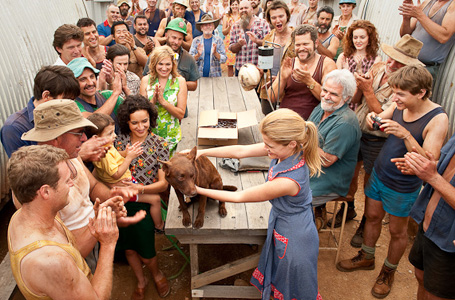
Once, a local politician called Australia the "white trash of Asia". It was nasty and uncalled for. While it is true that Australia is not as developed as the United Kingdom, Canada or the United States, there’s something to be said about an unpopulated wilderness attracting not particularly rich people from all over the globe who end up building a nation with their own bare hands, brick by brick into a developed, industrialised society. Had that statesman more sense in his head and more heart overall, he would have acknowledged how much in common Singapore had with Australia; we are after all countries built out of virtually nothing, by the hard work of poor immigrants.
In Red Dog, this pioneering spirit of Australia is celebrated in typically roundabout and rambunctious fashion. The eponymous character is a real-life dog, a sort of mascot of Western Australia. At the end of its much chronicled life and wanderings across the entire Pilbara region, the dog collapses in front of a small mining town where it was first discovered and loved, a victim of strychnine poisoning. The denizens of the town gather in the bar for a vigil for the beloved canine, taking turns to tell stories of their personal encounters with the famous dog.
In these often funny and sometimes touching stories about how a roguish stray managed to bring smiles to so many people, they recount also the history of an all-male company mining town where people flock to for a chance to make some money to blow away on beer and gambling over the weekend, and its growth into a somewhat respectable community. In paying tribute to a stray dog, the film also pays tribute to the independent spirit of Australia and its pioneers – and I suspect to the music of the 70s, which form much of the fabric of this film.
Red Dog manages to avoid the emotional manipulation and cheap sentimentality that is rife in other films about cute animals. Not only does Red Dog turn a genre on its head, it’s a pretty entertaining film too.












 打印版本
打印版本











读者回应
请先登入再使用此功能。